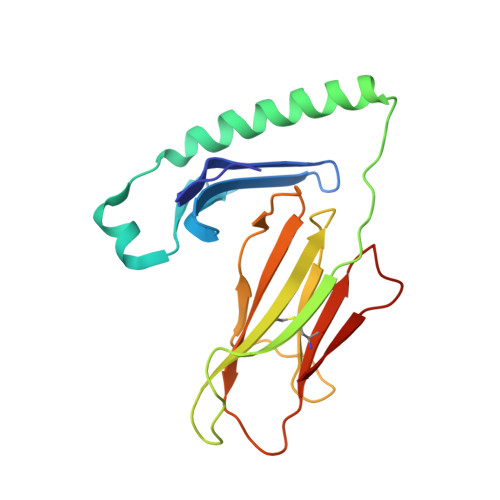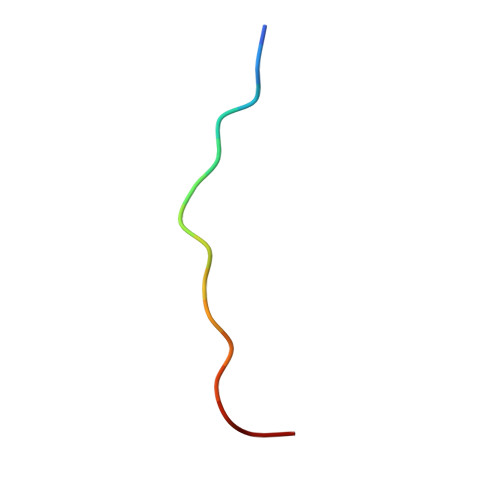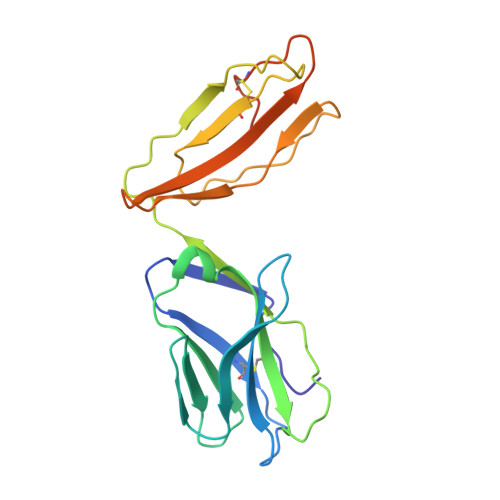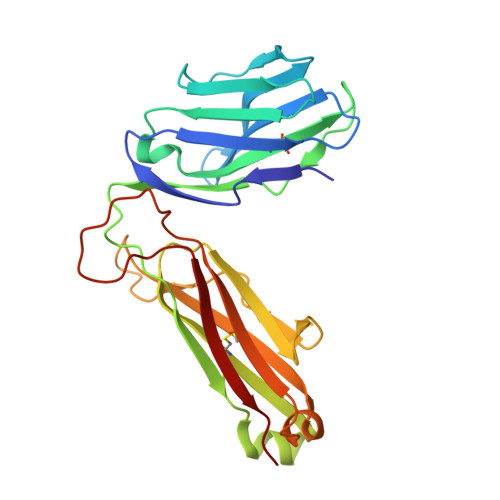A structural basis of T cell cross-reactivity to native and spliced self-antigens presented by HLA-DQ8.
Tran, M.T., Lim, J.J., Loh, T.J., Mannering, S.I., Rossjohn, J., Reid, H.H.(2024) J Biol Chem 300: 107612-107612
- PubMed: 39074636
- DOI: https://doi.org/10.1016/j.jbc.2024.107612
- Primary Citation of Related Structures:
8VCX, 8VCY, 8VD0, 8VD2, 8VDD, 8VDU - PubMed Abstract:
Type 1 diabetes (T1D) is a T cell-mediated autoimmune disease that has a strong HLA association, where a number of self-epitopes have been implicated in disease pathogenesis. Human pancreatic islet-infiltrating CD4 + T cell clones not only respond to proinsulin C-peptide (PI 40-54; GQVELGGGPGAGSLQ) but also cross-react with a hybrid insulin peptide (HIP; PI 40-47 -IAPP 74-80; GQVELGGG-NAVEVLK) presented by HLA-DQ8. How T cell receptors recognise self-peptide and cross-react to HIPs is unclear. We investigated the cross-reactivity of the CD4 + T cell clones reactive to native PI 40-54 epitope and multiple HIPs fused at the same N-terminus (PI 40-54 ) to the degradation products of two highly expressed pancreatic islet proteins, Neuropeptide Y (NPY 68-74 ) and amyloid polypeptide (IAPP 23-29 and IAPP 74-80 ). We observed that five out of the selected SKW3 T cell lines expressing TCRs isolated from CD4 + T cells of people with T1D responded to multiple HIPs. Despite shared TRAV26-1-TRBV5-1 gene usage in some T cells, these clones cross-reacted to varying degrees with the PI 40-54 and HIP epitopes. Crystal structures of two TRAV26-1 + -TRBV5-1 + T cell receptors (TCRs) in complex with PI 40-54 and HIPs bound to HLA-DQ8 revealed that the two TCRs had distinct mechanisms responsible for their differential recognition of the PI 40-54 and HIP epitopes. Alanine scanning mutagenesis of the PI 40-54 and HIPs determined that the P2, P7 and P8 residues in these epitopes were key determinants of TCR specificity. Accordingly, we provide a molecular basis for cross-reactivity towards native insulin and HIP epitopes presented by HLA-DQ8.
Organizational Affiliation:
Infection and Immunity Program & Department of Biochemistry and Molecular Biology, Biomedicine Discovery Institute, Monash University, Clayton, Victoria, Australia 3800.





















